Dangerous gluten: is it in oats
If earlier ordinary oats were used as feed for horses, cattle and poultry, today the share of the product in the human diet is increasing. The popularity of the cereal is due to the high content of protein, amino acids, vitamins, and easy digestibility. Oats are widely used in baby and dietetic food; diets with it are recommended for various diseases.
There is only one contraindication for eating oats - gluten intolerance. Therefore, before including in the diet of cereals and dishes based on it, make sure that you do not suffer from celiac disease. What is gluten, what are its benefits and harms to the body, whether oats contain gluten or not, and in what quantity, will be discussed in our article.
The content of the article
The chemical composition and beneficial properties of oats
Nature has generously supplied oats with valuable vitamins, minerals and other useful elements.
For 100 g of grain there are:
- proteins - 10 g;
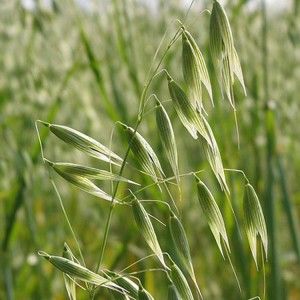
- fat - 6.2 g;
- carbohydrates - 55.1 g;
- dietary fiber - 12 g;
- water - 13.5 g;
- ash - 3.2 g;
- calorie content - 316 kcal.
Carbohydrates are presented as simple - glucose, maltose, sucrose and fructose, and complex, useful - starch (36.1 g) and dietary fiber (12 g).
The grain contains B vitamins (thiamine, riboflavin, niacin, pyridoxine, pantothenic acid, folates), vitamin A (beta-carotene), vitamin C (ascorbic acid), vitamin E (alpha-tocopherol), vitamin PP (nicotinic acid ), vitamin H (biotin).
Oats are of great importance as a source of minerals. They are mainly represented by silicon (3333.3% of the norm per 100 g), manganese (262.5%), cobalt (80%), copper (60%), phosphorus (45.1%), selenium (43.3 %), magnesium (33.8%), zinc and iron (30%). In a lower concentration there is potassium, calcium, sodium, sulfur, chlorine, iodine, fluorine, chromium.
Many people have a question, what is the use of oats for the human body. First, it has the highest protein content of any cereal. It has a high nutritional value, is involved in the metabolism of fats, carbohydrates, minerals, serves as a plastic material for the construction of cells, tissues, organs.
Oats contain high concentrations of protein: 100 g of cereals satisfies the body's daily requirement for protein compounds by 18.8%.
For reference. Deficiency of protein in the body can cause general malaise, reduced endurance and performance, dry skin, degeneration of teeth and nails, body swelling.
Secondly, starch is present in grains in large quantities (36.1 g per 100 g of grain). It is a complex carbohydrate that plays an important physiological role for the digestive system and the body as a whole:
- lowers sugar levels;
- supports the immune system of the intestinal tract;
- protects mucous membranes from the aggressive effects of external and internal factors;
- has an anti-inflammatory effect;
- has a beneficial effect on the skin condition: moisturizes, nourishes, tones, lightens dark circles under the eyes and age spots;
- accelerates regenerative processes.
Thirdly, vitamins, micro- and macroelements contained in cereals support the functions of the nervous and urinary systems, gastrointestinal tract, ensure the proper functioning of the heart and blood vessels.
B vitamins, together with ascorbic acid, have a positive effect on the state of the cardiovascular system: they activate the processes of hematopoiesis, participate in the production of erythrocytes, increase the strength and elasticity of vascular walls and small capillaries, and reduce their permeability.
Active substances help the body get rid of harmful cholesterol, which serves as a good prevention of atherosclerosis, diseases associated with vascular occlusion and their complications: hypertension, ischemia, myocardial infarction, diabetes mellitus.
Oats have a positive effect on the nervous system. Regular use of dishes made from it allows you to improve brain activity, activate thinking processes, increase concentration, get rid of insomnia, feelings of fear, anxiety, worries.
Due to the diuretic effect and the presence in the composition of plant fiber, oats qualitatively relieve the intestines from toxins and toxins, stimulate the peristalsis of the large intestine, normalize metabolism, and improve digestion. The product is useful for diarrhea, but uncontrolled use can have the opposite effect and lead to constipation.
Oat dishes are recommended for those who want to lose weight or control weight. Groats are very nutritious, they quickly saturate the body with one small portion. The carbohydrates present in the composition are absorbed over a long time, filling the body with energy, without turning into new fat deposits.
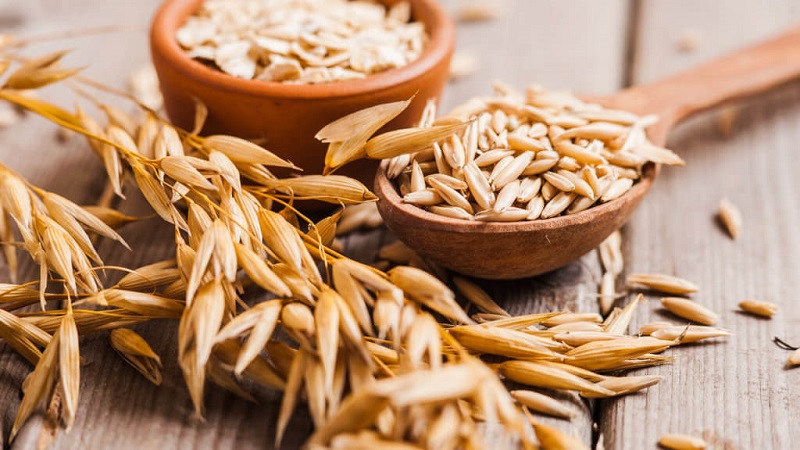
Oats effectively cleanse and bile ducts, blood, liver, useful in urolithiasis, maintains normal blood sugar levels, destroys and removes uric acid salts in case of gout, arthritis and arthrosis.
Grain is used as an anti-inflammatory, diuretic, wound-healing agent, as a powerful antioxidant that helps to maintain youth and beauty, slow down the aging process. Grain helps in the fight against colds, strengthens the immune system, increases the tone of the body, protects against flu, urinary infections.
What foods contain gluten
Gluten or gluten is a group of proteins contained in cereal plants, especially rye, barley and wheat. The term combines proteins of the fraction prolamine and glutelins, namely: avenin, hordein, sekalin, gliadin. In dry form, it has neither taste nor color; upon contact with water, an elastic, sticky mass is formed.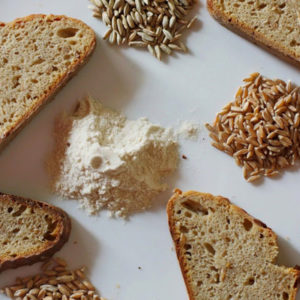
The highest concentrations, about 70%, are found in barley, wheat, rye; less is found in rice, millet, oats. Gluten is used in the baking industry to improve the elasticity and firmness of the dough, increase the specific volume of the product, and extend the shelf life.
Therefore, gluten can be found in bread, breakfast cereals, and other dough products. On average, a person consumes from 10 to 45 g of gluten per day, most of which enters the body along with bread, pasta, bakery products.
Adding gluten to ice creams, gravies, yoghurts, and ketchups to give the product a thick texture. It is used in the form of dry gluten for the preparation of minced meat, sausages, dumplings, semi-finished products, pasta.
Is there gluten in oats and how much?
Are oats gluten-free or not? Despite the fact that the former belongs to the Cereals family, whose seeds usually contain gluten, unrefined grains do not naturally contain it.
The fractional composition of oats is very different from the protein fractions of wheat, barley and rye. From the group of proteins in oat grains, glutelins (from 43 to 80%), prolamins (12-58%) predominate, globulins (from 18 to 56%) are the least found. When compared with wheat and barley grains, oat grains contain half the glutamic acid, but more argenine.
Oats grown from genetically pure seeds with the removal of other cereal plants from the fields, provided that it is processed cleanly, stored in a separate bin, does not pose a threat to people with individual gluten intolerance.
Important! Be aware that gluten can be accidentally added to oatmeal when processing other grains. Naturally, its concentrations will be lower than in barley, rye, wheat, but sufficient to cause a severe allergic reaction in people with gluten intolerance.
Another reason why oats may be contraindicated in celiac disease is the presence of avenin in the composition.This protein is similar in its physical properties to glutelin, and can also cause allergies. According to clinical data, about 20% of celiac patients respond to avenin, as well as to gliadin (wheat prolamine), hordein (barley), and sekalin (rye).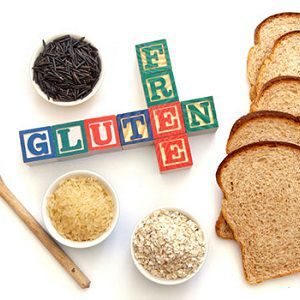
The level of gluten in oat kernels can vary greatly and depends on the cultivation technology, grain handling, growing conditions and storage conditions. If explicit gluten is present in the composition, the manufacturer must report its content and concentration.
Usually, the packaging contains information that the product contains residual traces of gluten. This means that during packaging, storage, and transportation of oats in small doses, grains of gluten-containing grain crops that are not indicated in the composition of cereals could get into production.
Important! Such a product belongs to a risk group and is not recommended for people with gluten intolerance.
Are oats gluten free?
On the shelves of shops, supermarkets, you can buy gluten-free oats, which do not contain obvious or hidden gluten. Such a product can be recognized by the labeling on the “gluten free” package, indicating the country of origin and the quality examination certificate.
Advice... For a gluten-free diet, it is better to buy cereals from domestic producers or a similar foreign product from well-known and proven brands.
How much gluten is in oatmeal
Liquid oatmeal, cooked in water without salt and sugar, contains an average of 11.6 g of starch per 100 g. The concentration of gluten differs depending on the type of cereal, grain processing technology and preparation method.
Why is gluten harmful and what is the benefit of it?
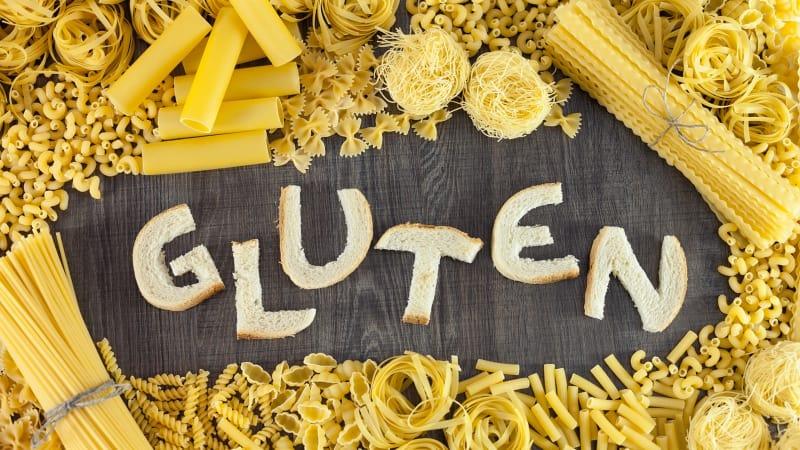
Gluten plays an important role in the body: protects the intestinal mucous membranes from irritating physical and chemical factors, inhibits inflammatory processes, absorbs and removes toxic substances, toxins and other harmful compounds.
Products containing starch are recommended to be included in medical nutrition for erosive and ulcerative diseases of the gastrointestinal tract, since gluten has the ability to reduce acidity, relieve the severity of symptoms of gastritis, gastric ulcer and duodenal ulcer.
For healthy people, the use of gluten-containing products within the normal range does not threaten life and health. In people with gluten intolerance, protein consumption can cause celiac disease (celiac disease), which is manifested by dysfunction of the small intestine.
The main clinical signs of celiac disease are decreased appetite, diarrhea, weight loss, loose stools with a lot of fat, bloating and rumbling, soreness in the abdomen, weakness, apathy, and fatigue. Elderly people experience pain and aches in muscles and bones.
Why celiac disease is dangerous
The progression of celiac disease leads to disruption of the chemical reactions and physical mechanisms that keep the body alive. Patients with celiac disease have an increased risk of bowel cancer, inflammation of the small intestine and ileum, and iron deficiency anemia.
A long-existing syndrome can cause a violation of mineral metabolism, protein deficiency, hypovitaminosis, and the inability to give birth to a child.
How to know if you have a gluten intolerance
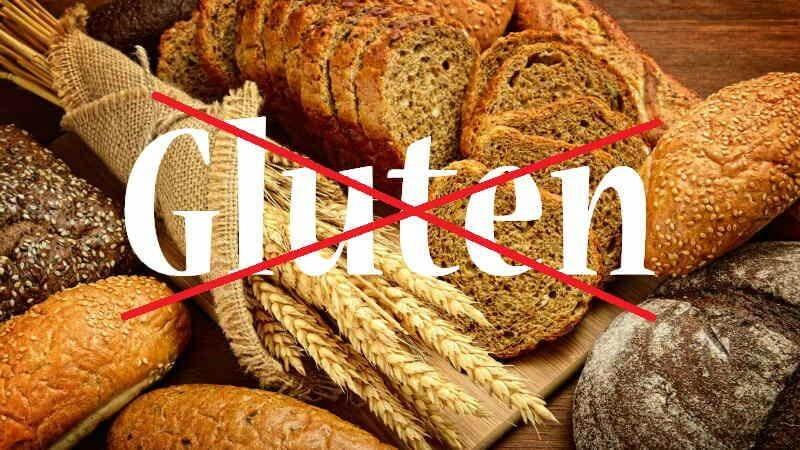
The reason to suspect gluten intolerance is a decrease in stamina and performance after a meal, up to a complete breakdown. Some people experience headaches after eating, complain of decreased concentration, joint pain, tingling and numbness in the arms and legs, skin rashes, and ulcers in the mouth.
Important! When the indicated symptoms appear, a gastroenterologist's consultation and a comprehensive examination are necessary to determine the level of gluten sensitivity.
The most informative and reliable method for detecting gluten enteropathy is the determination of antibodies to tissue transglutaminase and gliadin in the blood. The reliability of the result is 95-97%. You can perform a biopsy of the mucous membrane of the small intestine and identify the existing atrophic changes in the villi (their smoothing), the concentration of lymphocytes in the mucosa.
reference... To clarify the diagnosis according to the testimony of a specialist, endoscopy of the small intestine, ultrasound of the abdominal organs, computed tomography, fluoroscopy of the intestine, MRI of mesenteric vessels, and Schilling test are performed.
Conclusion
The question of whether oats contain gluten remains open today. Oats are not officially a gluten-containing cereal, according to the Celiac Disease Treatment Center at Chicago Medical University. But in fact, the grain is not entirely safe for people with celiac disease - due to the presence of the protein avenin.
Another reason why oats should not be consumed for celiac disease is the possibility of grain contamination during the process of growing, collecting, transporting, storing and packing together with other cereals. Nutritionists recommend that those on a gluten-free diet buy a product labeled "gluten free" - gluten-free.